
7 Cold and Drought-Resistant Trees
Trees for dry soil that are perfectly hardy
Contents
In the era of climate change, many of us are seeking plants that are drought-tolerant, capable of extracting every last drop of water from the soil or that have developed strategies to minimise losses. Drought-resistant trees are invaluable for greening our gardens, trapping that troublesome carbon that poses so many issues, and providing beneficial shade. You may be wondering which tree is the most resistant to heatwaves, but also to frost that can occur in your region? Which would be both a tree for dry ground, a tree resistant to heat and cold, capable of thriving despite extreme climatic conditions, without compromising the aesthetics and diversity of the garden.
Discover our selection of 7 drought- and frost-resistant trees, trees whose resilience is matched only by their beauty in the garden!
Purple 'Forest Pansy' Judas Tree: heat and cold resistant tree
Easy to live with, the Judah Tree Cercis canadensis ‘Forest Pansy’, also known as the Canadian Redbud is adorned with large heart-shaped purple-red leaves, preceded in early spring by a welcome display of bright pink flowers. Its cultivation is within reach of all gardeners as it tolerates all types of soils, provided there is good drainage. It loves the sun, but also accepts semi-shaded conditions, preferably sheltered from cold winds. It is a tree resistant to both heat and cold. Its great hardiness allows it to withstand temperatures down to -25 °C, and its drought tolerance, once established, makes it an ideal tree for Mediterranean or dry gardens.
The habit of Cercis canadensis ‘Forest Pansy’ is naturally bushy, but it can be trained as a standard from planting. Its modest size (a height of 5 m with aspread of 3 m) makes it an easy subject to plant in all types of gardens, large or small, where it will stand out with its lovely purple coloration.

Cercis canadensis ‘Forest Pansy’: its spring flowering and purple coloration
Read also
Drought-resistant treesThe sterile White Mulberry: a drought-resistant, fast-growing tree
Once cultivated for its leaves used as food for silkworms, the Morus alba ‘Fruitless’ or Fruitless White Mulberry is interesting for its foliage and broad silhouette. This beautiful hardy, fast-growing tree will reach between 10 and 15 m in height, with a spread of about 8 m. In good soil and sunlight conditions, the fruitless white mulberry can exhibit vigorous growth during its early years. Its dense deciduous foliage, with large glossy green leaves turning golden yellow in autumn, makes it a perfect shade tree. This sterile variety does not bear fruit, which helps avoid messiness that can be bothersome for some gardeners.
Perfectly hardy (down to -28 °C), it also tolerates drought very well and thrives in all types of soil, preferably fertile and well-drained, in a warm and sunny position. It copes well with urban pollution but is sensitive to sea spray.
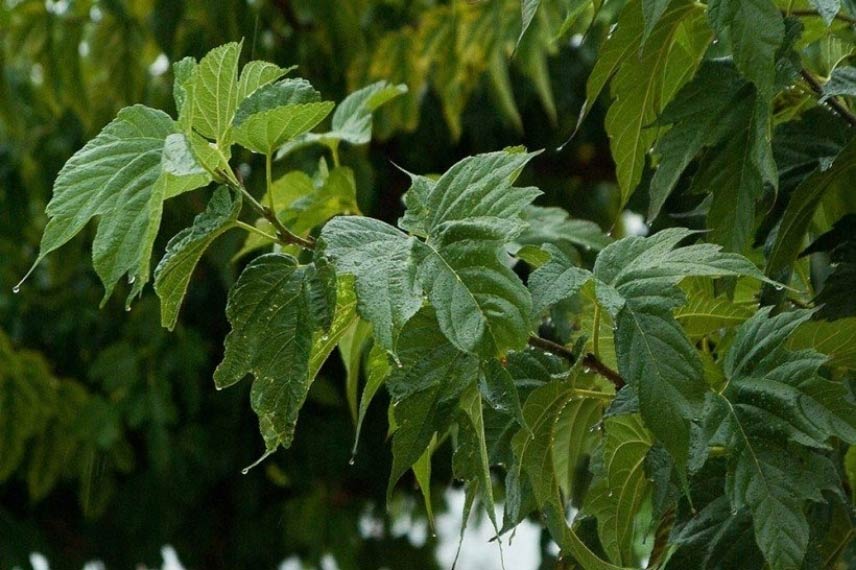
Morus alba ‘Fruitless’
Discover other Trees and large shrubs
View all →Available in 0 sizes
Available in 1 sizes
Available in 1 sizes
Available in 1 sizes
Available in 1 sizes
Available in 1 sizes
Available in 2 sizes
Available in 1 sizes
Available in 1 sizes
Available in 1 sizes
The Purple Redbud 'Rubylace': drought-tolerant tree
Cousin of acacias and mimosas, the Gleditsia triacanthos ‘Rubylace’ or Purple Honey Locust is native to the eastern and central United States. It has inherited from this origin a great hardiness – as once mature, it will withstand winter temperatures down to -29 °C – as well as a capacity to adapt to dry soils in summer. This dryland tree is also capable of adapting to wet, even waterlogged soils, as well as poor, calcareous soils: a true all-rounder!
It is a tree with a majestic habit and its deciduous foliage is quite original. Cut, bronze-red at the bud burst period, then red-green in summer, it later turns a deep, bright yellow in autumn. Its branches droop in an elegant and airy drape. It will reach about 15 m in height and 10 m in spread.
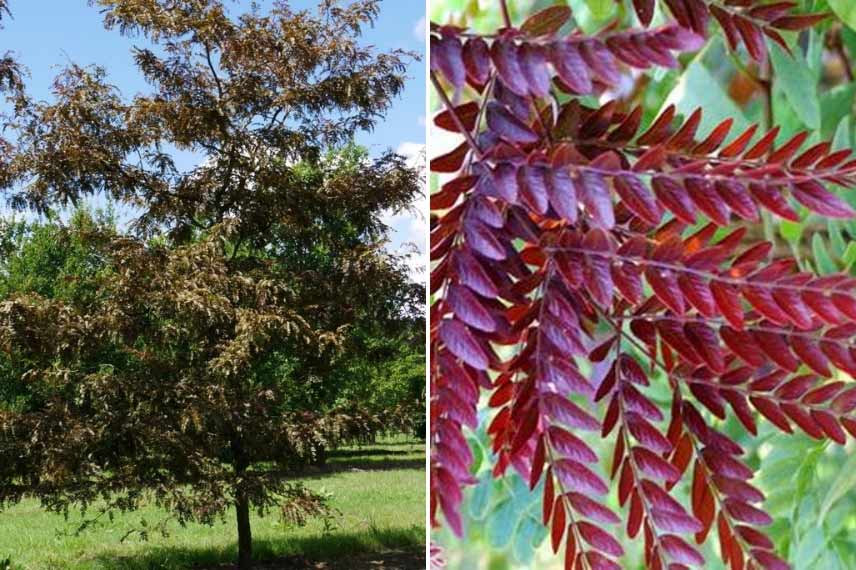
Gleditzia triacanthos ‘Rubylace’
Read also
10 very hardy, frost-resistant treesThe 'Alphen's Globe' Ball Plane Tree: a drought-resistant tree
Easy to integrate into gardens, the Platanus acerifolia ‘Alphen’s Globe’ is a compact form of the plane tree, reaching a height of10 m with aspread of6 m. Its foliage forms a beautiful compact ball of large deciduous, palmate leaves, easily identifiable.
In terms of growing conditions, it shares the same hardiness and ease as the common plane tree: it adapts to all types of soil, including poor and dry ones. Once established, it is a drought-resistant tree. Hardiness (down to -23.5 °C) and robustness are also among the qualities of this ball-shaped plane tree. With its fairly modest dimensions, you will easily find a place for it in the garden, where its rounded silhouette, supported by a trunk with beautiful bark that peels off in plates, can soften the somewhat angular contours of a formal garden or provide lovely shade for a terrace.
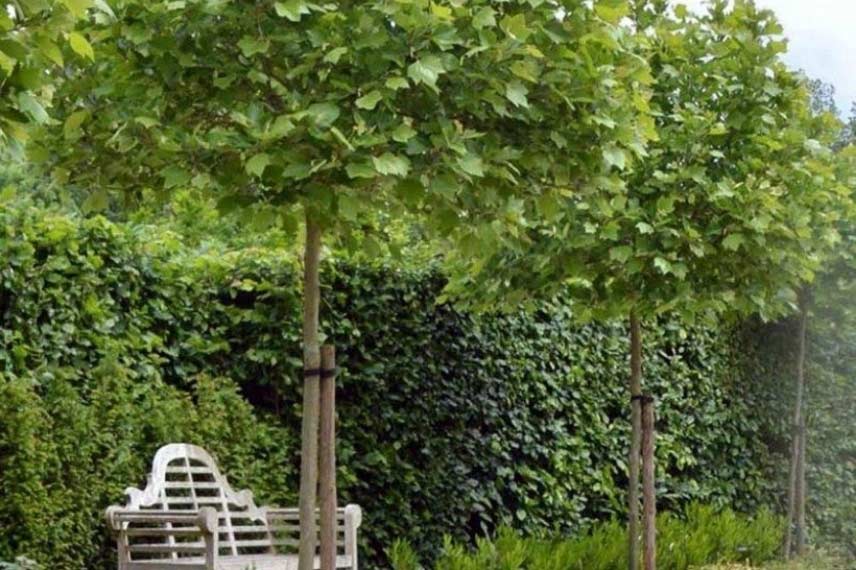
Platanus acerifolia ‘Alphen’s Globe’
Scots Pine: tree for dry soil
Adapted to large gardens, Scots Pine or Pinus sylvestris is a majestic conifer, perfectly hardy (down to -34.5 °C) and drought-resistant once established. Its grey-blue foliage and characteristic silhouette make it one of the most beautiful pines in Europe. If you have enough space to accommodate it (in cultivation, it can reach 25 m in height with a spread of 8 to 10 m), its fairly rapid growth will allow you to enhance your garden with a remarkable and sturdy specimen that will provide light, pleasantly scented shade.
Choose for this tree for dry soil a sunny and open spot, in light, well-drained soil (it prefers sandy or loamy soils), even poor and arid in summer and, if possible, low in lime.
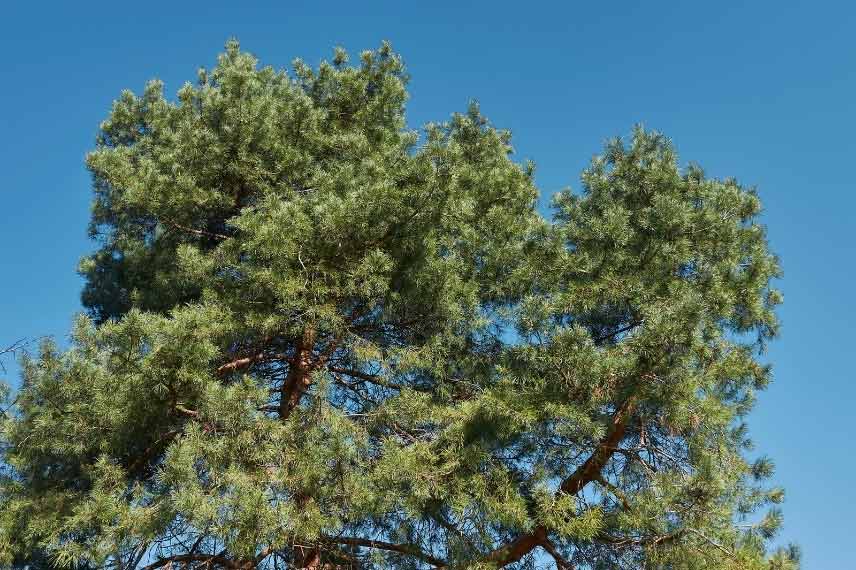
Pinus sylvestris
Osage Orange: a heat-resistant tree
Original, hardy and drought-resistant, the Maclura pomifera, also known as Osage Orange, is well worth knowing! It is a beautiful tree with glossy dark green deciduous foliage that turns golden yellow in autumn. Female specimens produce large, inedible, bumpy, fragrant green-yellow fruits that resemble oranges. It has an elegant, spreading habit with zigzagging thorny branches.
Hardy down to -20.5 °C, it will thrive in many regions of the country, particularly in the south of the Loire. It enjoys full sun and is not fussy about the soil in which it is planted, as long as it is deep and well-drained, even if slightly calcareous. The Maclura pomifera is a heat-resistant tree once well established.

Maclura pomifera
The Weeping Pagoda Tree: a drought- and frost-resistant tree
To conclude this selection: a small, elegant, and charming weeping tree, a drought and frost-resistant tree. The Sophora japonica ‘Pendula’, or Weeping Pagoda Tree, is very drought-resistant once established. Hardy down to -23.5 °C, it will find its place in many regions of France, and its tolerance to pollution allows it to be planted in urban environments.
Its long, pendulous branches almost touch the ground and feature a finely divided, glossy green deciduous foliage. Many years of patience are required to see this charming tree bloom, as it takes nearly twenty years to reward us with its panicles of small, honey-scented white flowers! However, even while waiting for this beautiful flowering, it remains very attractive and unique. It will fit perfectly in small spaces, as it will reach 3 m in height and 3 m in width with a fairly rapid growth.
Plant the Sophora japonica ‘Pendula’ preferably in full sun, in neutral, fertile soil, with low lime content. It prefers well-drained soils.
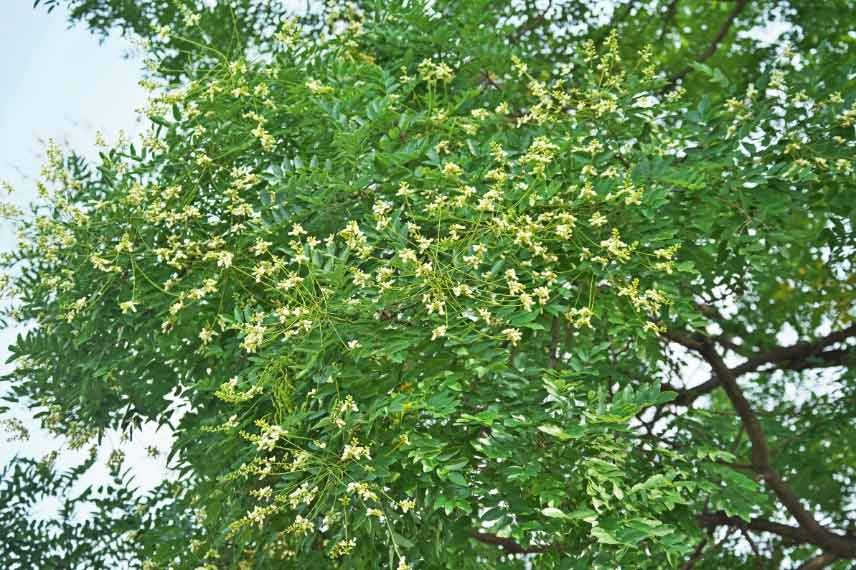
Sophora japonica ‘Pendula’
- Subscribe!
- Contents



































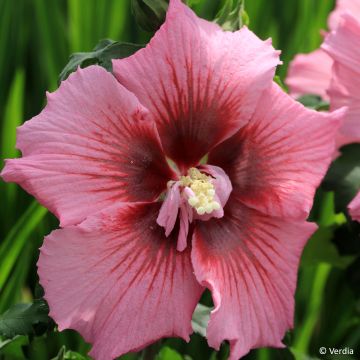
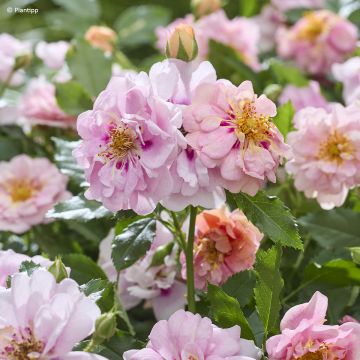

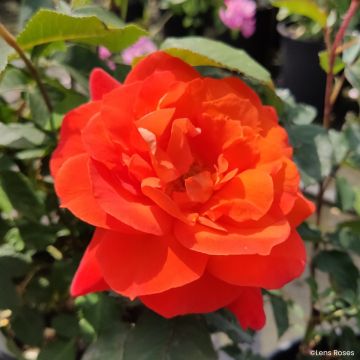

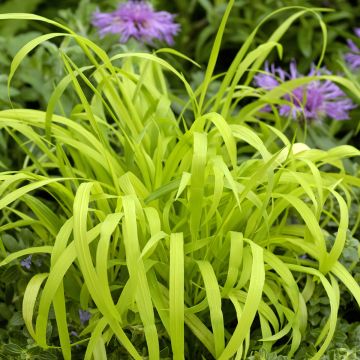
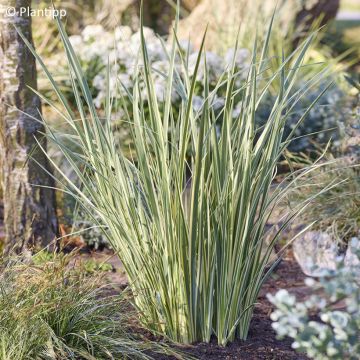
Comments